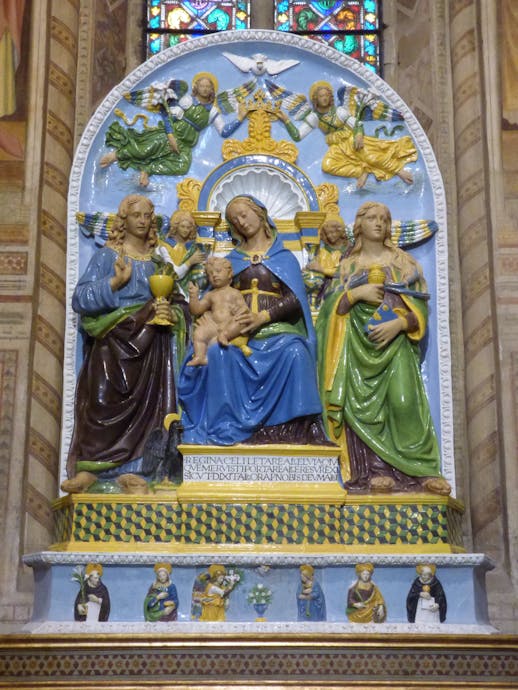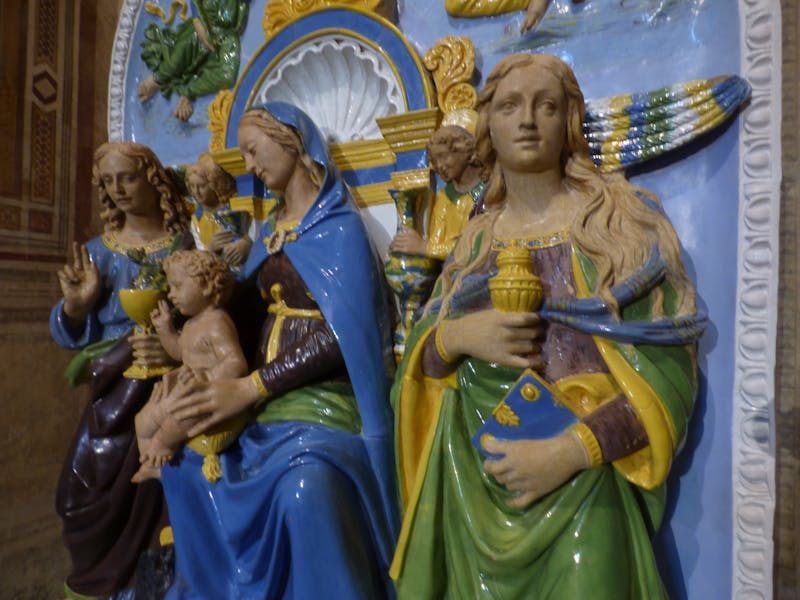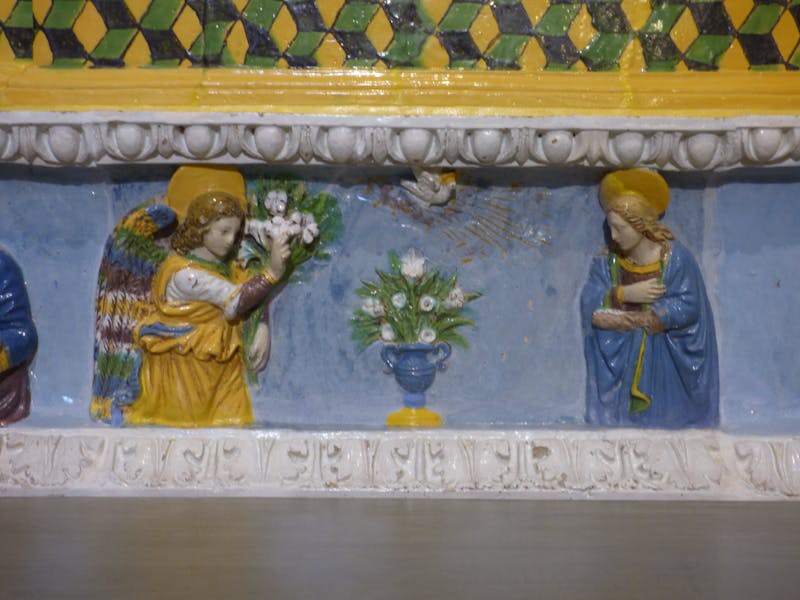
Giovanni della Robbia's "Madonna and Child with Saints"
Giovanni della Robbia's altarpiece, which can be dated to the 1520s – and which had probably not been touched since the flood and had certainly never been restored – bore the marks of the numerous rearrangements and traumas it had suffered due to the many times it had been disassembled and reassembled over the centuries. In some cases the original colours were tarnished and hidden beneath gold-coloured varnish while in others they were covered by repainting or had turned grey due to an accumulation of dirt and candle smoke. But it was the figures' faces that were in the worst condition of all, while the predella, which had soaked in the floodwater of 1966, revealed stubborn concretions and substantial deposits of dirt.
The restoration began with an inspection of the parts subject to weakening of the enamel and of the ceramic impasto. In order to preserve every part of the work, preconsolidation was performed in the areas where the glazing and enamel layers were most fragile.
Overall initial dusting was followed by the mechanical removal of non-original puttying and a lowering of reconstruction levels. The most stubborn dirt was removed mechanically through softening with compresses of ammonium carbonate solution in deionised water. The flesh areas warranted a different approach, however. After initial tests were performed, it was decided in agreement with the restoration supervisor to remove the repainting in view of its extremely poor condition. Removal took place gradually by softening the layer with solvents and subsequently through mechanical action. Beneath the repainting we discovered the original layer of terracotta with a stable and fairly homogeneous patina devoid of enamel. This allowed us to rediscover Della Robbia's original modelling which the heavy repainting had totally concealed for such a long time.
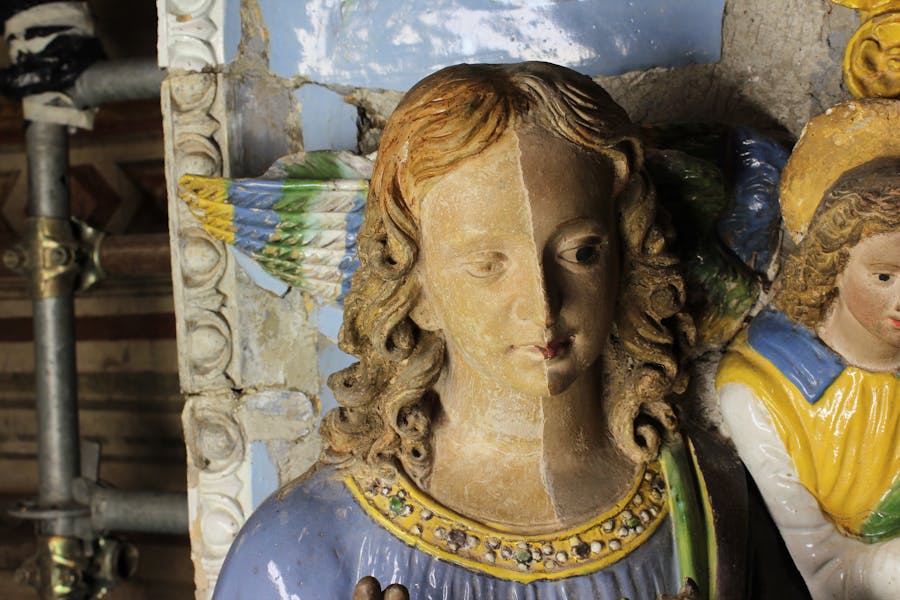
The recovery of the original flesh areas by removing the repainting
The cleaning phase was paralleled by a phase of consolidation. The puttying between the firing joints and the deteriorated parts was performed with acrylic-based putty, smoothed and finished to achieve a compact surface in harmony with its surrounding environment. A slightly lower level was maintained in the points where the cuts in the modelling joined and in the cracks caused by breaking during firing, while the puttying was left flush in those areas spoiled by more recent breaking. All the original firing flaws, considered important for our knowledge and understanding of the work and of the artistic technique used to produce it, were left on view.
The restoration was concluded with retouching in watercolour of the areas made good during the operation, a recognisable and totally reversible operation performed using the dotting technique.
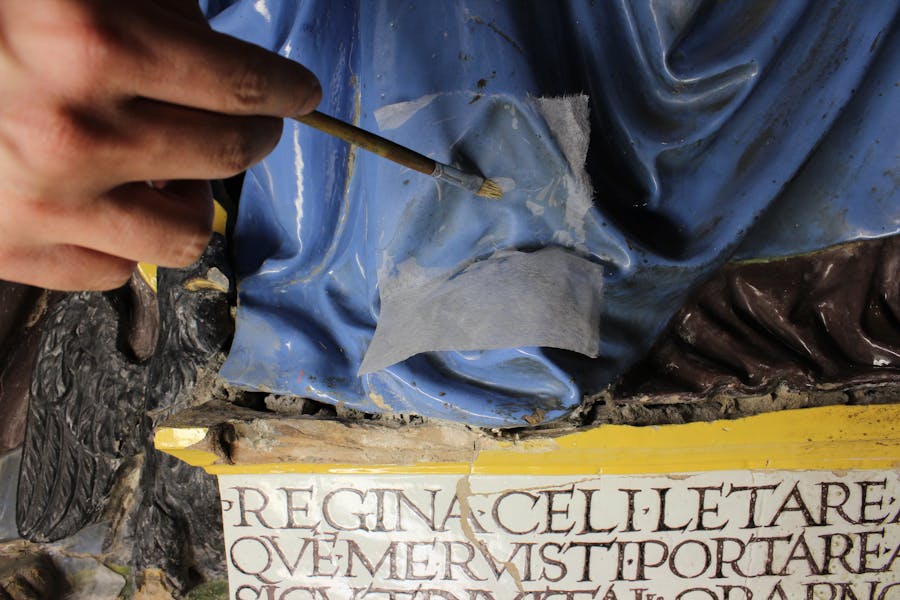
The consolidation of the glazing layer
Innovative use was made of modern technologies in support of the restoration during the puttying stage. A portion of moulding above the inscription at the foot of the throne was missing a large part of its glazed terracotta, thus it was decided to restore the work's formal unity by reconstructing the piece using a reversible approach. A three-dimensional scan of the artefact produced a digital cast which was crucial for the reconstruction using 3D modelling software. The physical copy was printed in resin in a single piece. This technical solution permitted both minimal contact between the reconstruction and the original material and the full reversibility of the entire operation.
The restoration was made possible with a contribution from the Friends of Florence Foundation thanks to donors Mary Stauer, Robert Doris and their daughter Annie.
The altarpiece after the restoration
